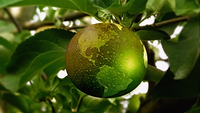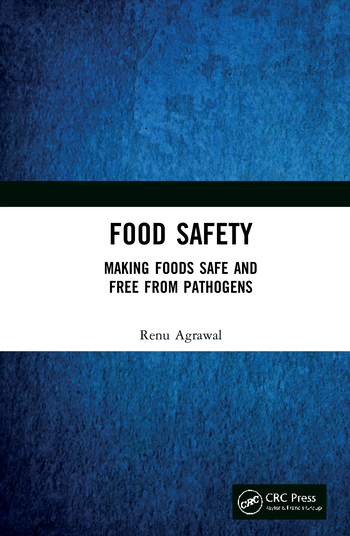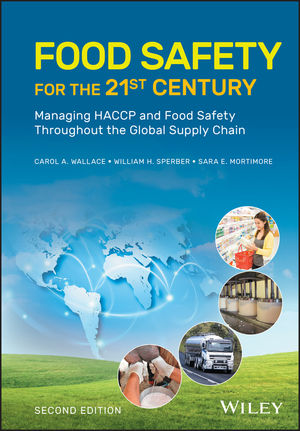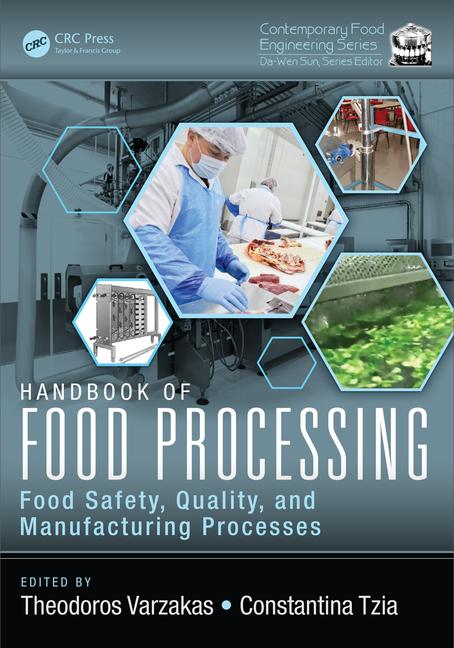The Challenges of Banana Production: Pathogens, Breeding, and Sustainability

I spoke with Dr. Miguel Dita, senior scientist, Plant Health for Sustainable Banana Production, with The Alliance of Bioversity International and The International Center for Tropical Agriculture (CIAT), in an attempt to examine the challenges of sustainable banana production.
1) Dr. Dita, we have recently known from a recent publication in the “World Economic Forum” that the relatively new strain “Foc TR4” (aka “Tropical Race 4”) of Panama disease is capable of infecting the “Cavendish banana,” which is known to be, at least in the past, resistant to Fusarium wilt (FW), the causal agent of Panama disease. What do you think are the consequences of this, being that the Cavendish banana is the most exported variety in the world (97% of all banana exports)?
Foc TR4 is doubtless the long-term major threat of the banana export industry and is likely to continue over many decades. It is important to highlight that TR4 also affects many other local banana varieties that are important for local markets and food security in many countries. Having said that, the Cavendish banana export industry is really at risk. TR4 is already impacting the banana industry, even in countries where the disease is not yet present. Many growers are already wisely investing a lot in biosecurity. These measures already increase production costs, although these costs may not be recognized in the market. Once TR4 is detected and is spreading in a given export Cavendish area, only growers with immediate investments capacities in place might survive. Strategies are still needed for smallholders to deal effectively with TR4 in the current scenario. Many small growers are found in organic production, although they may not be supplying the banana juice market.
2) In your recent published article “Ex Ante Assessment of Returns on Research Investments to Address the Impact of Fusarium Wilt Tropical Race 4 on Global Banana Production,” you mention that breeding has been proposed as the most viable response through genetic modification and with even greater promise in gene editing; however, this would complicate the trade scenario with European countries as genetically modified organisms (GMOs) have very strict regulations here. How do you think we can manage the disease then?
This phrase you mentioned is in the introduction to the article with references to other authors, and the same paragraph highlights the controversies around approaches to controlling TR4. In the options we clearly mention are restrictions for the use of GMOs, and we do not even calculate the benefit for the export industry. But of course, we cannot ignore current public concerns with GMOs (either by CRISPR or “conventional” transgenic approaches), although it could change in the future. The so-called traditional breeding (hybridization) is also being used to develop varieties resistant to TR4 for some decades, and commercial varieties are available for other varieties and races like Silk and Race 1.
I understand you want to talk about other management strategies, but I would like just to reflect on some points with a potential new TR4-resistant variety, let’s say a Cavendish 2.0:
1) Should we go again through intensive monocrop until Race 5 appears or even a different pest comes in and start everything again? Or
2) Should we take TR4 as an opportunity to diversify the banana cultivar portfolio and also re-think current production systems?
Probably, the right answer now is a mix of 1 and 2: Get a short-term solution (e.g., Cavendish 2.0) and invest massively to reach option 2.
Unfortunately, many are skeptical, and it is common to hear that if we get a Cavendish 2.0, history will repeat again. We at the Alliance Bioversity International and CIAT will work with our partners tireless towards more diversified and resilient banana food system and landscapes. We need innovative and collaborative mechanisms to do so.
Now your question could be answered by answering another two: How are countries where TR4 is present managing the disease? And what are the advances on TR4 management strategies other than the use of resistant varieties?
Here we can summarize three fundamental strategies for farms where the TR4 is present:
1) Each farm needs to have strict biosecurity measures in place to ensure the disease does not reach the farm, and that it is immediately detected and contained.
2) Early detection and eradication using establish protocols are critical as soon as a plant shows initial symptoms.
3) Implementation of soil health-oriented practices to boost plant defenses and increase soil suppressiveness.
These also might apply to TR4-free farms.
3) You mentioned in one of your recent articles that the disease has spread now to Southeast and South Asia (Vietnam, Laos, Myanmar, India, and Pakistan) and at the transcontinental level into the Middle East (Oman, Jordan, Lebanon, and Israel) and Africa (Mozambique). What do you see as most endangering, the propagation of the disease, or the lack of knowledge by farmers to attack it?
Unfortunately, TR4 is moving. Fortunately, we have tools to detect it. If we analyze where TR4 has been reported in the last 10 years, except in one case (In the Island of Mayotte TR4 was found in Silk- and Bluggoe-type bananas), all new outbreaks were associated with Cavendish export bananas. So, that is an indication of possible risk factors associated to TR4 dissemination. TR4 dissemination might be associated to lack of knowledge on disease epidemiology, lack of discipline to follow rules, and the intrinsic condition of this pathogen, which we cannot eradicate yet. There are two scenarios here: 1) short-distance dissemination (farm-to-farm) where anthropogenic and other epidemiological factors like flooding and contaminated soil factors play a big role and 2) long-distance dispersion, which seems to be mainly associated with human activities.
4) Do we have now enough knowledge to decrease its propagation?
Yes, by implementing good biosecurity measures at different levels (plot, farm, communities, countries, etc.). We have good examples of it, for instance, in Australia. The problem is that not everybody can afford the implementation of these measures systematically. So, abandoned fields are not difficult to find, and they create a huge TR4 inoculum source.
5) What do you think the fruit juice industry could do in advance to create more awareness of the disease?
For raising awareness, the fruit juice industry could be part of the international efforts already in place, for instance in Latin America and the Caribbean (LAC). In LAC, we started raising awareness at different levels more than 10 years ago. We developed a regional contingency plan with OIRSA (Organismo Internacional Regional de Sanidad Agropecuaria – www.oirsa.org), which was then adapted by countries to their particularities. Around 20 training courses have been conducted in different countries: training people at different levels from diagnostic to disease management. Flyers, posters, and communication campaigns have been launched, reaching airports and terrestrial borders. One interesting exercise performed was a simulation exercise where a given country simulates the presence of the first TR4 outbreak and sees how they are prepared to manage it. Currently, a regional project led by the Food and Agriculture Organization intends to strengthen these capacities. It is very important to keep in mind that it should be coordinated with ongoing efforts of national/regional plant protection organizations. We have been working on it for the last 10 years with not much support from the private sector. I firmly believe that the support should go beyond awareness and also reach research efforts already in place. TR4 spreading will continue, so we need to not only delay its arrival but also work hard to generate solutions to continue producing banana after it has spread in a specific area.
On the other hand, and although this is not related to your question, banana puree and juice bases for export are usually made from bananas not achieving export standards in terms of length or thickness and during times of excess production. Fruit production specifically for processing would be possible and some varieties with some resistance to TR4 and even Black Sigatoka are already known. These are not considered acceptable for export as fresh fruit, but eventually could be good options for juice and puree and also help to meet some challenges in terms of pesticide reduction, etc.
6) As we know that there are different races of Foc, can the other races help elucidate mechanisms to manage Foc TR4 disease?
Genetically speaking, TR4 seems to be quite different from the rest of the Foc populations, for example, Race 1. However, progress obtained on understanding predisposing factors (biotic and abiotic) and managing Foc Race 1 applies very well to TR4. Of course, we cannot ignore that management of soil-borne pathogens need site-specific approaches.
7) Could you please tell us more about the role of potassium and phosphorous on FW intensity?
We do not have too much information on potassium other than we need to have good levels in the soil as bananas is high potassium-demanding crop. However, low levels of phosphorus have been very well associated with high levels of FW intensity for both TR4 (China) and Race 1 (Brazil). So, phosphorus, among other nutrients (calcium and nitrogen sources) should seriously be taken into account when managing FW.
8) In Europe, we recently had the publication of the Farm to Fork Strategy (Green Deal) that, among other things, targets:
- A reduction by 50% of the use and risk of chemical pesticides and the use of more hazardous pesticides by 50% by 2030.
- A reduction of nutrient losses by at least 50% while ensuring that there is no deterioration in soil fertility. This will reduce the use of fertilizers by at least 20% by 2030.
- A reduction by 50% of the sales of antimicrobials for farmed animals and in aquaculture by 2030.
- Achieving 25% of agricultural land under organic farming by 2030.
Do you consider that diseases like Foc TR4 can be managed with the targets that the European Commission wants to implement?
This is an excellent question. We have discussed the Farm to Fork Strategy with some stakeholders in LAC and the impact really goes beyond TR4. These targets on pesticide and nutrient reduction would not affect TR4 management, significantly. Actually, a better use of fertilizers and less pesticides in the soil might improve soil health and reduce TR4 impact. The problem would be with other diseases like Black Sigatoka (caused by an ascomycete fungus that affects banana specifically in tropical climates; including Asia, West Africa, China, and LAC), for instance, which are not easy to manage in the humid tropics without certain levels of pesticides.
9) Could you please tell us more about the current research in banana that is being conducted by the centers with which you are involved?
As there are many projects running on bananas, it might be good to highlight first the primordial role in the conservation of banana genetic resources. There are projects on strengthening pest and disease capacities on diagnostic, surveillance, and management, especially with banana Xanthomonas wilt (BXW), banana bacterial wilt (BBW), Enset wilt (a bacterial disease caused by Xanthomonas campestris pv. musacearum), “Banana Bunchy Top Virus” (BBTV) known for infecting banana plants and other crops, and FW in both Africa and Latin America. They are mainly focusing on smallholder agriculture systems and local varieties, such as Mchare and Matoke (Africa) and Plantains (Latin America). Also, very important projects are ongoing in socioeconomics, breeding, and genetic resources conservation. Policies, seed systems, and gender and generational transformation are also well represented. You can find relevant information and current research on bananas under the RTB program here: https://www.rtb.cgiar.org/crops/bananas/ as well as on the Promusa website (www.promusa.org).
Dr. Alejandra Aguilar Solis is the technical and scientific affairs manager at the European Fruit Juice Association.
Looking for a reprint of this article?
From high-res PDFs to custom plaques, order your copy today!








